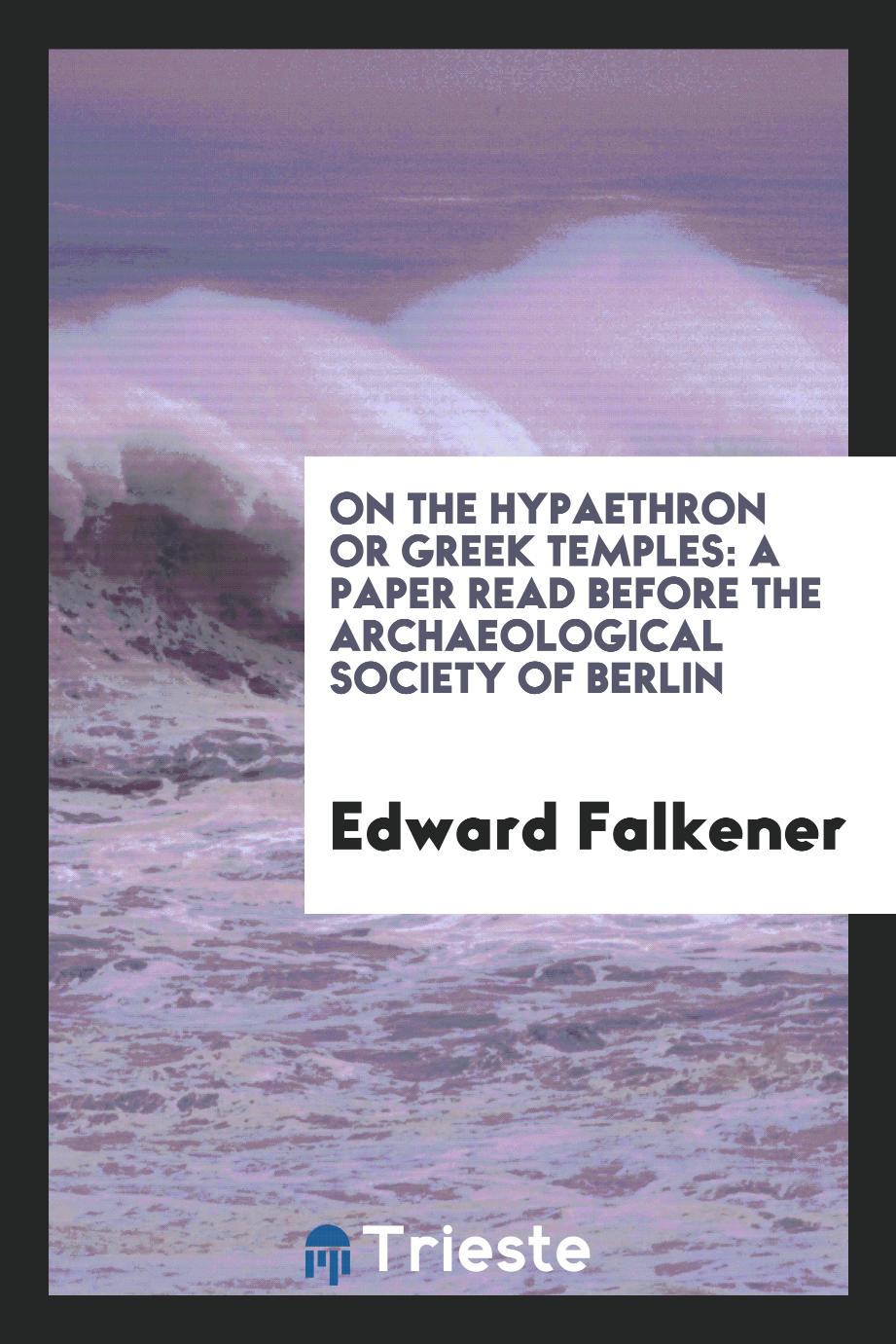
Edward Falkener
Edward Falkener (1814-1896) was an English architect and author. Born in London on 28 February 1814, he was the son of Lyon Falkener, head of the ordnance department in the Tower of London. He was educated at a private school in Kent, and after declining a nomination for the civil service of the East India Company on the ground of delicate health, he was articled to the architect John Newman (1786-1859). He became a student of the Royal Academy in 1836, and in 1839 gained its gold medal for a design for a cathedral church. In 1842 Falkener started on a tour of most of the countries of Europe, on through Asia Minor, Syria, Palestine, and Egypt, and visiting some of the Greek islands. He made studies of the architectural remains in the various places he visited. While in Denmark he made sketches of the palace of Frederiksberg; it was burned in 1859 and Frederick VII of Denmark asked for Falkener's original drawings, to support restoration work; the king in acknowledgment made him a knight of the Order of the Dannebrog. In 1847, while he was at Pompeii, he was allowed to excavate, at his own expense, the "House of Marcus Lucretius", a plan and description of which was given in his Museum of Classical Antiquities. The Greek inscriptions he collected during his travels were edited in 1852 by Wilhelm Henzen. Falkener practised as architect for a few years, building some offices on St. Dunstan's Hill, London E.C., and subsequently made alterations to his house at Glanymor, Laugharne, Carmarthenshire; but spent most of his time on writing and making drawings of restorations. From 1851 to 1855 he edited the Museum of Classical Antiquities. His drawings were exhibited in Paris at the Exposition Universelle, 1855, and gained him the grande médaille d'honneur, and in 1861 he was presented with another gold medal by the king of Prussia, for his works on classical archæology. In 1866 Falkener married, gave up private practice, and retired to Wales; but he continued studies and restorations to the time of his death, at Glanymor on 17 December 1896. He was a member of the Academy of Bologna, of the Architectural Institutes of Berlin and Rome, and was elected honorary fellow of the Royal Institute of British Architects on 2 December 1895.

